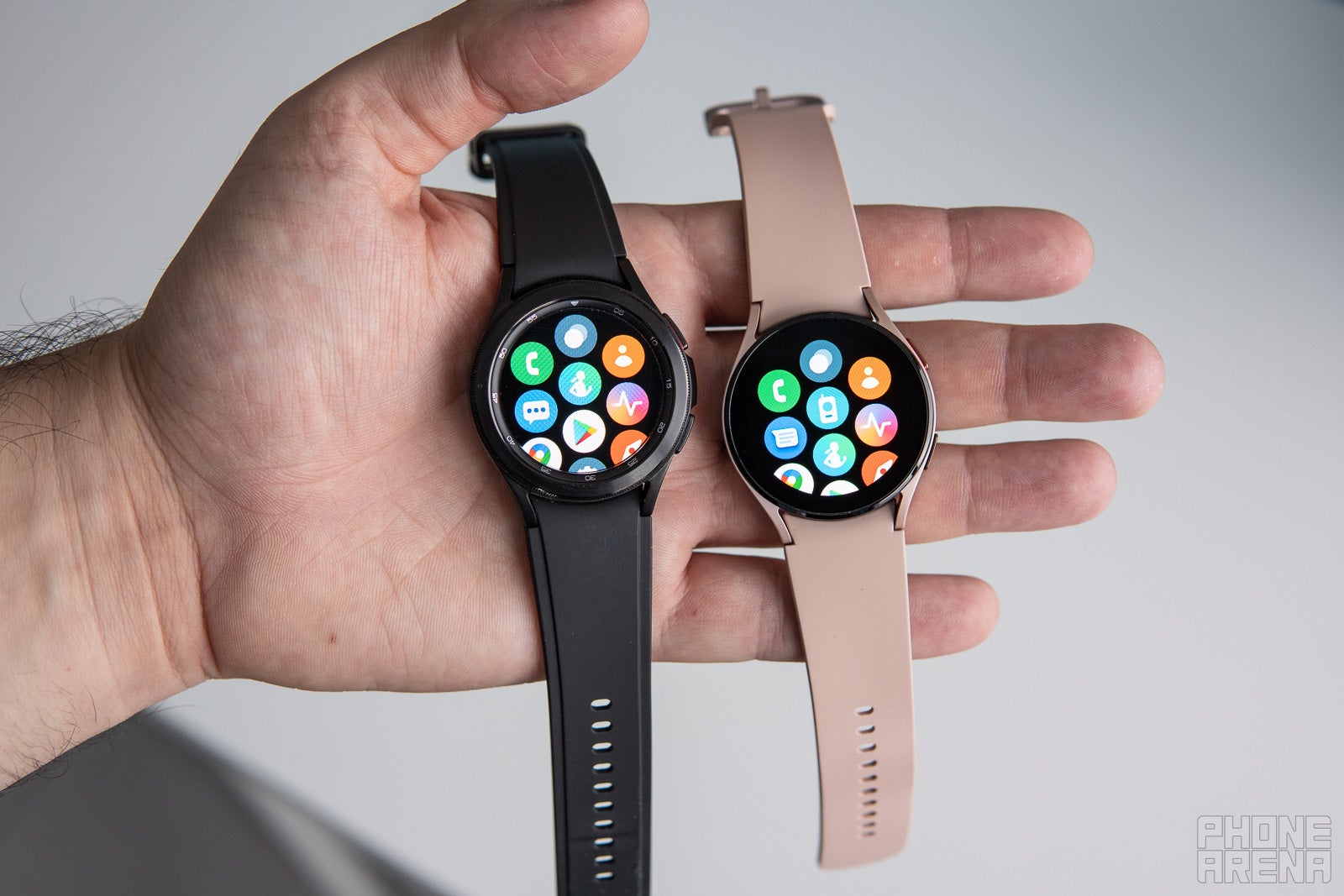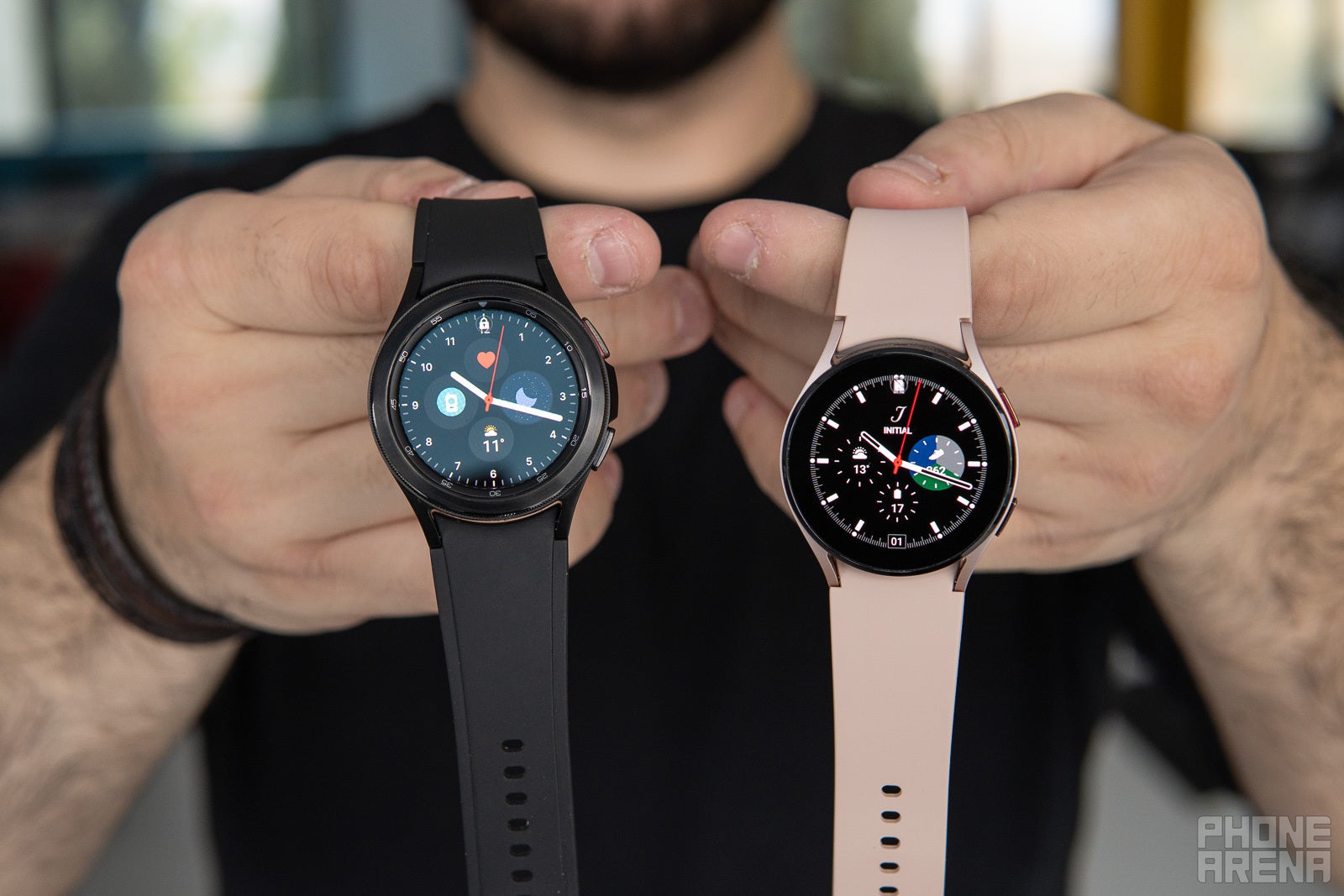Samsung Galaxy Watch 4 vs. Galaxy Watch 4 Classic

The Galaxy Watch 4 and Galaxy Watch 4 Classic are Samsung's top smartwatches right now, and they are the purest love letter to the blazing friendship between Samsung and Google. Indeed, the two have worked together to create an overhauled version of Wear OS, which draws heavy inspirations from Samsung's Tizen interface.
But which of these two watches is the better buy for the average smartwatch enthusiast? What are the differences between the two, and is the Watch 4 Classic worth it over the Galaxy Watch 4? Let's find out!
Read more:
- Samsung Galaxy Watch 4 Classic Review
- Samsung Galaxy Watch 4 Review
- Best Android smartwatches right now
- Samsung Galaxy Watch 4 vs. Galaxy Watch 4 Classic
Samsung Galaxy Watch 4 Classic vs Galaxy Watch 4: Prices
The Galaxy Watch 4 and the Galaxy Watch 4 Classic are already available on the shelves. Here's a breakdown of the pricing:
- Galaxy Watch 4 (Wi-Fi version) 40mm: $249.99
- Galaxy Watch 4 (Wi-Fi version) 44mm: $279.99
- Galaxy Watch 4 (Wi-Fi + LTE version) 40mm: $299.99
- Galaxy Watch 4 (Wi-Fi + LTE version) 44mm: $329.99
- Galaxy Watch 4 Classic (Wi-Fi version) 42mm: $349.99
- Galaxy Watch 4 Classic (Wi-Fi version) 46mm: $379.99
- Galaxy Watch 4 Classic (Wi-Fi + LTE version) 42mm: $399.99
- Galaxy Watch 4 Classic (Wi-Fi + LTE version) 46mm: $429.99
Samsung Galaxy Watch 4 Classic vs Galaxy Watch 4: Design
The main difference between the Galaxy Watch 4 Classic and the Galaxy Watch 4 is the general size and overall design. The Galaxy Watch 4 Classic is a decidedly more masculine watch that looks somewhat more rugged than the Galaxy Watch 4, which could easily pass as a dress watch in the right circumstances.
The main reason for that is the mechanical rotating bezel on the Galaxy Watch 4 Classic, which does not only make it easy to navigate throughout the interface but also provides a pleasing haptic feedback to all interactions with the watch. Meanwhile, the Galaxy Watch 4 employs a capacitive bezel that emulates the function of the rotating bezel but is definitely not as good.

The Galaxy Watch 4 is available in 40mm and 44mm sizes, while the Galaxy Watch 4 Classic comes in 42 and 46mm. Due to its slightly more rugged nature and the hardware rotating bezel, the Galaxy Watch 4 Classic is slightly taller than the Galaxy Watch 4, and as such might be a slightly bigger nuisance with tighter sleeves on.
The ruggedness is also implied by the build materials. The Galaxy Watch 4 comes with an aluminum case, while the Galaxy Watch 4 Classic relies on stainless steel. Of course, this translates to a noticeable difference in the weight of the watches themselves. The Galaxy Watch 4 weighs in at 26 and 30gr, respective of the size, whereas the Galaxy Watch 4 Classic tips the scales at 47 and 52gr, depending on the size.
Colors-wise, there are some important differences as well. The more minimalistic Galaxy Watch 4 is available in silver, black, and green for the larger 44mm version. Black, silver, and pink gold are the colors of choice for the 40mm version, which implies the femininity of this particular version. The Galaxy Watch 4 Classic comes in black or silver, solidifying its rugged masculinity.

Having used both, I must say I'm definitely swayed to the Galaxy Watch 4 Classic more. The Galaxy Watch 4 feels like a gimped version of its larger brother, and the lack of a mechanical rotating bezel essentially strips the watch from its most interesting and unique hardware feature. The gimmicky "virtual" bezel of the Galaxy Watch 4 feels weirder to use, and if you're none the wiser, you might not even know that the smartwatch offers such a functionality at all.
The default watch bands of both the Watch 4 and Watch 4 Classic are made out of fluoroelastomer. Both are okay if you're into sporty activities, but you'd probably want to stock up on alternative bands if you're into customization and intending to use your watch for different occasions.
Samsung Galaxy Watch 4 Classic vs Galaxy Watch 4: Display
What can I say about the Super AMOLED displays on these two Samsung watches, they are simply exceptional. As we've grown accustomed and come to expect from Samsung, the screens offer exceptional colors, vibrancy, and contrast. The brightness is also exceptional — the displays are perfectly legible even in bright sunlight conditions, which is definitely an important aspect to consider.
As far as ruggedness is considered, both watches are protected by Corning Gorilla Glass DX+. It should offer great scratch-resistance, but be wary of bumping it in a sharp object, as it's hardly shatter-proof.

Samsung Galaxy Watch 4 Classic vs Galaxy Watch 4: Health and fitness
Both watches come with the same set of fitness and wellness features on board. There are tons of available sports and activities to choose from, and all of these can be later tracked on in Samsung Health on your phone. While the data you get is pretty comprehensive, the Samsung Galaxy Watch 4 and Watch 4 Classic activity tracking isn't as complex or detailed as with those dedicated multisport smartwatches coming from the ranks of Garmin, Coros, or Polar.
Samsung Health acts as a hub for all things fitness and wellness, giving you a rundown of your daily steps, exercise, consumed calories, hydration, stress, heart rate trends, blood pressure, cardio data, blood oxygen, women's health, and more. Sleeping with your watch on will give you pretty insightful sleep tracking insights.

Another cool feature is the body composition metric, which uses the new Bioelectrical Impedance Analysis Sensor and gives you an estimate of your body-mass index, as well as a breakdown of body fat percentage, skeletal muscle, and so on. Definitely one of the more interesting features of the Galaxy Watch 4, but somewhat gimmick-y.
Samsung Galaxy Watch 4 Classic vs Galaxy Watch 4: Functionality
The Galaxy Watch 4 and Watch 4 Classic both come with the totally redesigned Wear OS, which has been developed by Google and Samsung and incorporates the looks and general functionality of Samsung's Tizen with the underlying framework of Google's popular operating system.
The new Wear OS just makes sense, and I regard it as a major success: long-time Tizen fans will feel right at home, while Wear OS users will be pleased with the abundance of compatible Android apps available for the Galaxy Watch 4. Indeed, you have access to the Google Play Store and can easily download Wear OS versions of your favorite Android apps
The new Wear OS just makes sense, and I regard it as a major success: long-time Tizen fans will feel right at home, while Wear OS users will be pleased with the abundance of compatible Android apps available for the Galaxy Watch 4. Indeed, you have access to the Google Play Store and can easily download Wear OS versions of your favorite Android apps

One aggravating feature that is common on both watches is the fact that they have an artificially limited compatibility with non-Samsung devices. Pairing with an iPhone is a no-go, and if you're using a non-Samsung phone you might be locked out of the most intriguing health features -- blood pressure monitoring and ECG.
Samsung Galaxy Watch 4 Classic vs Galaxy Watch 4: Performance and battery
Interestingly, the watches share the same batteries in spite of the different sizes. Both the Galaxy Watch 4 40mm and the Galaxy Watch 4 Classic 42mm versions share the same 247mAh battery unit, while the Galaxy Watch 4 44mm and the Galaxy Watch 4 Classic 46mm have a 361mAh battery on board.
Regardless of which version you pick, you should generally expect up to a full day of regular usage, with the larger watches logically having the upper hand when it comes to battery endurance. Of course, this also depends on how many features and functions you keep enabled. For example, having the always-on display as well as continuous heart-rate monitoring turned on means that you will most certainly have to top up your watch more often.
From a performance standpoint, both share the same brains. Both watches feature 1.5GB of RAM (a 150% upgrade from last year), and a hulking 16GB of storage this time around. Moreover, the processor handling all the action is Samsung's own new 5-nanometer Exynos W920 chip, which is making its first appearance in this very smartwatch series. The chipset is supposed to be 20% faster than its predecessor, the Exynos 9110, and brings 10X faster graphics performance.

Samsung Galaxy Watch 4 Classic vs Galaxy Watch 4: Which one should you get?
I'm not hiding my preferences for the Galaxy Watch 4 Classic. It's the best new smartwatch in Samsung's arsenal right now. I'd certainly go for the larger 46mm version if I were to buy the Galaxy Watch 4 Classic for myself, but don't get me wrong, there's nothing wrong with the Galaxy Watch 4. In fact, it's likely the better buy as it has all the same features as the Galaxy Watch 4 Classic but costs less.
Me? Well, I'm definitely a sucker for the rotating bezel, so the choice is a no-brainer.
Follow us on Google News
















Things that are NOT allowed:
To help keep our community safe and free from spam, we apply temporary limits to newly created accounts: